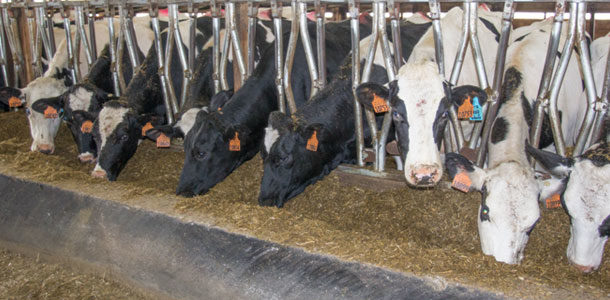Some internal ash occurs naturally in grasses (5 to 6 percent) and alfalfa (6 to 8 percent) from minerals like calcium, potassium, phosphorus and magnesium, but any ash above these levels comes from contamination, usually dirt.
Samples of hay and haylage submitted to the University of Wisconsin Soil and Forage Analysis Laboratory have averaged about 4 percent ash contamination, presumably from dirt. Furthermore, some samples have contained as much as 18 percent ash, suggesting that more than 10 percent of this forage was nothing more than dirt.
Dirt can contaminate forage in various ways. Some are natural and unavoidable. Grasses and legumes that lodge prior to harvest often come in contact with the soil. Splash from raindrops or irrigation can deposit soil onto plants. Dust from roads or nearby fields often sticks to plant leaves.
Management during harvest, storage and feeding of forages also can add dirt. Cutting too low may add dirt directly and place windrows in more direct contact with the soil. Rake and baler tines that touch the ground will add dirt to the forage. Storing bales or haylage on the ground can add soil, especially if it is muddy when forage is moved.
Several management adjustments can reduce dirt contamination:
- Plant lodging-resistant forages or harvest before lodging occurs.
- Use a 3-inch or greater cutting height.
- Use flat knives on disk mowers instead of angled knives to reduce suction of dry soil.
- Keep windrows off the ground by cutting with taller stubble and using a wide swath that lies on top of the stubble rather than crushes it.
- Prevent rake and baler tines from touching the ground. Wheel rakes tend to add dirt because they are ground driven; power-driven rotary rakes can lift hay more gently if they are not operated too rapidly.
- Limit horizontal movement of windrows. When combining windrows, move forage as short a distance as possible. Gather three windrows onto the center rather than move it all to one side. Use mergers instead of rakes when possible.
- Store bales off the ground.
- Store haylage on concrete or asphalt.
- Minimize mud contamination when feeding or moving forage.
Dirt contamination of hay and haylage may increase the perceived tonnage of forage. Unfortunately, every pound of unnecessary dirt equals one pound fewer nutrients and will reduce forage quality tests accordingly. FG
PHOTO
Photo courtesy of Mikeal Dixon
Bruce Anderson, Ph.D., is an agronomy and forage specialist at the University of Nebraska – Lincoln.









